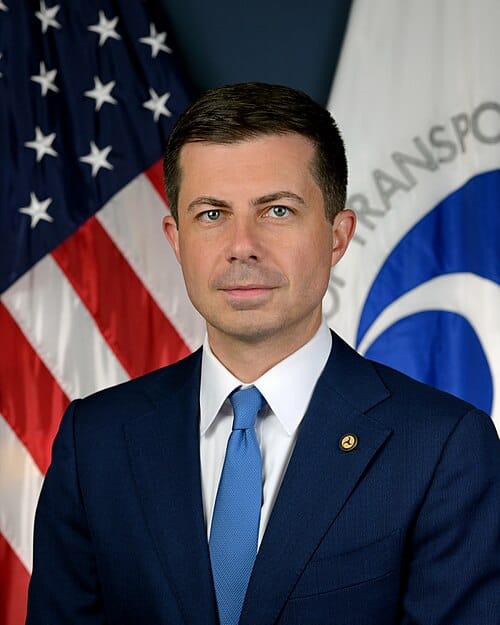How Trump Broke the Online Left

During the Obama years, as the internet exploded, left-wing online media took hold of the young generation. The Young Turks began growing massively, and prominent YouTubers like David Pakman, Sam Seder, Kyle Kulinski, and others gained large followings. Young people overwhelmingly voted for Obama in 2012, Hillary Clinton in 2016, and even Joe Biden in 2020.
But in 2024, that wasn’t the case. Trump performed significantly better with young voters, likely even winning 18–24-year-old men.
So, what happened?
Trump embraced alternative media online. He appeared on podcast after podcast—Joe Rogan, Ben Shapiro, Andrew Schulz, and others—directly reaching a younger audience. Kamala Harris, on the other hand, didn’t seem to utilize or even have equivalent platforms to advocate her message. Left-wing online media, once dominant, seems to have lost its grip on younger voters. It almost appears as though Trump broke the left-wing online media.
Let’s look at some examples.
Secular Talk
Krystal Ball’s husband, also known as Kyle Kulinski, is perhaps the most egregious example of someone who went from a populist firebrand to an establishment shill. Kulinski was a Bernie backer in 2016 and, to his credit, recognized early on that Trump had a realistic chance of winning. He was relatively fair to Trump at the time, even pushing back on the Russiagate conspiracy theory. He didn’t make a huge deal out of Trump’s language and seemed to maintain some level of independent thought.
That all changed after the 2020 election. Kulinski bought into the establishment narrative that Trump incited the January 6th riot, despite Trump clearly stating he wanted a “peaceful and patriotic protest.” Kulinski’s anti-Trump stance became so intense that he predicted Trump would lose the 2024 Republican primaries to Ron DeSantis, supported efforts to remove Trump via the 14th Amendment, and even backed the Alvin Bragg case—arguably the weakest and most blatantly political of the four Criminal cases against Trump.
When Trump won the 2024 election, Kulinski was stunned. He famously predicted prior to the election that Trump had no realistic chance of winning. He was even making videos about the exit polls, stating that they were looking really good for Harris. Now, he’s pushing the narrative that the election was “stolen,” promoting theories from fringe figures like Greg Palast. Once a popular voice for youthful populism, he now seems willing to promote any anti-Trump narrative if it helps him in the YouTube algorithm. That just doesn’t appeal to young people anymore.
The Young Turks (TYT)
TYT is a more complex case. You could argue they turned more establishment-leaning during Trump’s first term. His 2016 win seemed to shock and radicalize the network. They previously supported voices like Julian Assange—but that changed quickly when WikiLeaks exposed damaging information about Hillary Clinton, hurting her chances of winning the 2016 election. TYT became one of the main promoters of the Russiagate conspiracy theory, framing Trump as a Russian puppet.
This shift led to internal rifts. Jimmy Dore, a longtime TYT contributor, ultimately left the network because his anti-establishment views no longer fit in. TYT’s channel growth stagnated during the Trump years, likely because they straddled a weird middle ground: pretending to be progressive while backing establishment narratives if they were anti-Trump.
Lately, Cenk Uygur and Ana Kasparian have even begun challenging parts of progressive orthodoxy, causing friction with their audience. TYT is still evolving, but they no longer dominate the online left like they once did. But maybe they are trying to regain their anti-establishment roots by challenging left-wing establishment doctrine. We’ll see.
Destiny
Trump appears to have broken Destiny’s brain. Destiny was a big cheerleader of all the lawfare against President Trump. And it appears the fact that Trump beat the lawfare has caused Destiny to lose his mind. His anti-Trump rhetoric has become so extreme that he once said he didn’t care that an innocent Trump supporter was shot—simply because they supported a candidate he disagreed with. That’s disgusting behavior. He went from defending Kyle Rittenhouse’s right to self-defense, to saying there was essentially nothing wrong with innocent person being shot because he was a Trump supporter. Just shameful.

Destiny was never a populist anti-establishment figure compared to others on this list, so it’s no surprise he’s not resonating with 18–21-year-olds anymore. His complete moral abandonment when it comes to Trump supporters is a clear sign of how deranged some online left personalities have become.
The Majority Report
The Majority Report has always been a strongly left-wing outlet, but Trump has only pushed them further into hysteria. Hosts Sam Seder and Emma Vigeland confidently predicted that Kamala Harris would defeat Trump in 2024. Emma was especially confident, claiming that once Biden stepped down, Trump would be “cooked.” That obviously didn’t happen.
Election night was a rude awakening, and since then, both Sam and Emma have seemed more unhinged than ever. To be fair they did always push establishment talking points during Trump’s first term such as Russiagate, the “very fine people,” hoax and others—essentially parroting MSNBC but in a YouTube format. Unsurprisingly, they don’t appeal to Zoomers anymore.
The Majority Report used to feature reputable journalists like Glenn Greenwald and Matt Taibbi. But because these journalists don’t always push the establishment narrative—even if it benefits Trump—the show stopped having them on. Again, people don’t turn to online media to hear the same establishment narratives they can get from MSNBC or CNN. But that’s exactly what The Majority Report has become.
TikTok Influencers
Another example of the online left’s declining relevance is the rise of TikTok influencers like Harry Sisson and Dean Withers. Their primary goal on social media was to bolster support for Joe Biden and, later, Kamala Harris when she became the nominee. However, this strategy failed. Trump performed significantly better with young voters than any Republican in recent history, even winning among young men. Both Sisson and Withers frequently discuss topics like toxic masculinity, seemingly unaware that such rhetoric doesn’t resonate with young men. They exemplify how left-wing online media has lost its influence with young people, becoming a mere shadow of its former self.
Conclusion
These are just some examples, and we at the RIGHT-WING POPULIST will likely expose more online left-wing content creators in the coming days and months, but these were some of the most egregious examples.
Trump’s 2016 and 2024 victories fundamentally changed how these progressive YouTube shows operate. Many once-populist voices became establishment crusaders—not because of a principled stance, but simply because they were anti-Trump. Being critical of Trump is one thing, but young people, who consume the most online content, can see through inauthenticity. That lack of authenticity is why Trump did so much better with young voters, including winning young men.
The left-wing online media that once defined the digital landscape has lost its edge—and its audience. Now, if you’re part of the left, you’re much more likely to be found watching MSNBC, CNN, or some television news channel, instead of getting your content online. And if you are getting your content online and your left-winger, you’re much more likely to be from a millennial or older generation, not the zoomer generation.
Again, new polling shows that young Zoomers are shifting to the right. If the online left were still as prominent as it once was, this wouldn’t be happening. We’ll see how things progress in the future, but for now, it appears as though Trump broke left-wing online media—another one of his great accomplishments.



